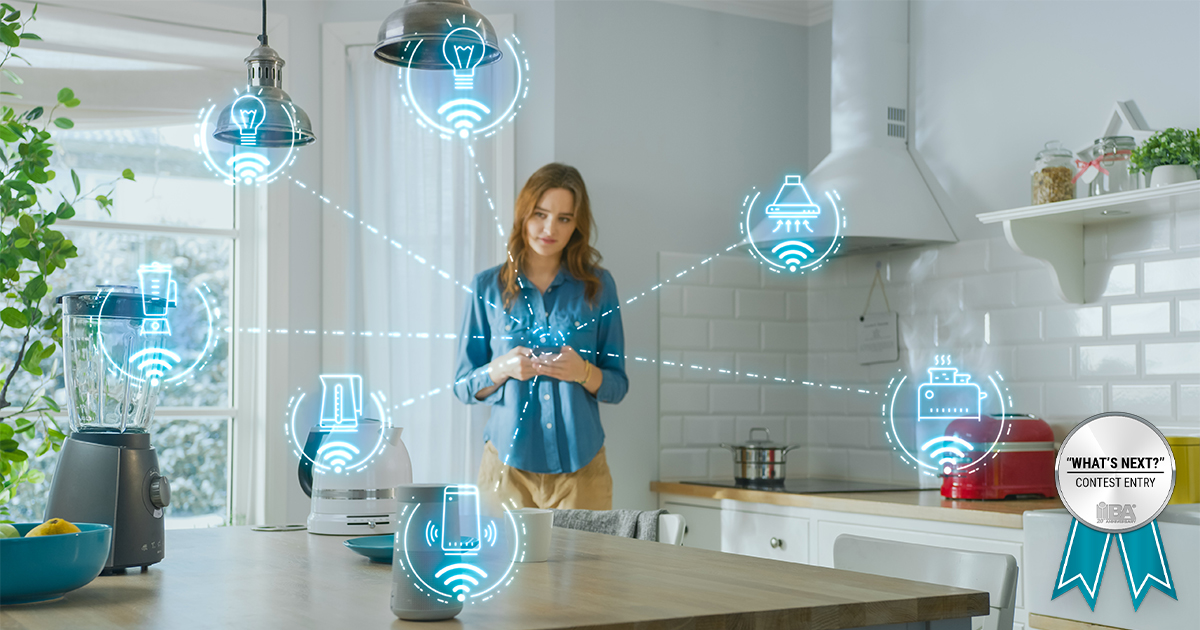The Intersection of IoT, Autonomous Devices, and Business Analysis
Receive free IIBA updates and exclusive content!

This is the fifth (and final!) entry in our “What’s Next” writing contest. Like what you’re reading? Vote for it in our LinkedIn poll at the end of the contest.
In today’s dynamic technological landscape, the Internet of Things (IoT) and autonomous devices have emerged as game-changers for businesses across industries. They’ve even become integral parts of our daily lives.
Personally, nothing beats the convenience of my dependable robo-vacuum diligently performing its cleaning duties each morning. And I love that my Wi-Fi-enabled lights smoothly adjust their brightness as the sun sets.
These interconnected systems offer new opportunities for efficiency, data-driven decision-making, and enhanced customer experiences. But fully capitalizing on the potential of IoT and autonomous devices requires a well-planned approach.
That’s where business analysis comes in.
The IoT Revolution
The phrase “Internet of Things” refers to a network of interlinked physical devices. It includes vehicles, buildings, and other objects embedded with sensors, software, and network connectivity. These devices collect and exchange data, empowering them to communicate and interact with their environment.The implications for businesses are profound.
One big advantage of IoT is the massive amount of data it generates. Sensors in devices collect real-time information about everything from temperature and humidity to consumer behaviour.
For businesses, this data is a goldmine. It can be used to gain insights into customer preferences, monitor equipment health, and optimize supply chains. On the flip side, the sheer volume of data can be overwhelming.
This is where business analysts—who specialize in devising strategies for data collection and analysis— come into their own. We have the skills to transform raw data into meaningful insights using techniques such as data mining and simplified decision trees.
Operational Efficiency and Cost Savings
Businesses can achieve higher levels of operational efficiency thanks to IoT devices.Take the manufacturing sector, for instance, where sensors can monitor equipment performance and predict maintenance needs to reduce downtime and save on maintenance costs.
In logistics, IoT-powered tracking systems provide real-time visibility into the movement of goods, optimizing routes and cutting down fuel consumption.
Here too, we can play a powerful role.
Business analysts can delve deep into existing processes, identifying bottlenecks and designing IoT solutions to streamline operations. Through cost-benefit analyses, we can assist organizations in making informed decisions about IoT investments, ensuring a positive return on investment.
The Rise of Autonomous Devices
Parallel to the growth of IoT is the development of autonomous devices. These technological marvels can execute tasks with minimal human intervention, from self-driving cars to drones and industrial robots.Autonomous devices are tightly integrated with IoT, often relying on real-time data and connectivity for decision-making.
And they’re reshaping customer experiences.
For example, self-driving cars stand on the brink of revolutionizing the transportation sector by promising safer and more efficient travel. These innovations may even usher in entirely new business models, such as autonomous ride-sharing services.
Business analysts can play a pivotal role in understanding customer needs and preferences in the context of these emerging technologies. We’re able to conduct market research and devise strategies to assist businesses in adapting to shifting consumer expectations.
Risk Management and Compliance
As businesses embrace IoT and autonomous devices, they inevitably confront new risks. The most pressing of these are data security and privacy.Business analysis professionals collaborate closely with cybersecurity experts to craft strategies for safeguarding sensitive data and ensuring compliance with regulations, including the General Data Protection Regulation.
We also evaluate potential risks associated with autonomous devices, such as accidents involving self-driving vehicles. Through identification and mitigation, we’re able to guide organizations through the intricacies of these technologies.
Conclusion
IoT and autonomous devices are promising to reshape industries, opening new horizons for businesses. That said, only a strategic and analytical approach can unlock their full potential.Business analysts are central to this journey, from conducting data analysis and enhancing operational efficiency to refining customer experiences and managing risks.
Businesses that leverage IoT and autonomous devices, under the guidance of skilled business analysts, can succeed in this fiercely competitive landscape. It’s not merely about adopting the latest tech—it’s also about using it wisely to drive business success.
I can’t wait to see all the exciting things in store for us!
Interested in big data? The Certification in Business Data Analytics (IIBA-CBDA) recognizes your ability to effectively execute analysis-related work in support of business analytics initiatives. Get certified today.
About the Author

Liza Laya, a Melbourne-based Business Analysis Manager, brings a wealth of over 23 years’ experience and expertise in business analysis and information technology to the forefront. Leading a skilled business analysis team, she established a business analysis centre of excellence in her organization. She began as a software developer, transitioned to project management, and now excels as a business analysis professional. With a robust background in business transformation, process engineering, and systems implementation across Australia, the US, and Asia Pacific, Liza remains dedicated to delivering valuable solutions that align with business, customer, and end-user needs.



